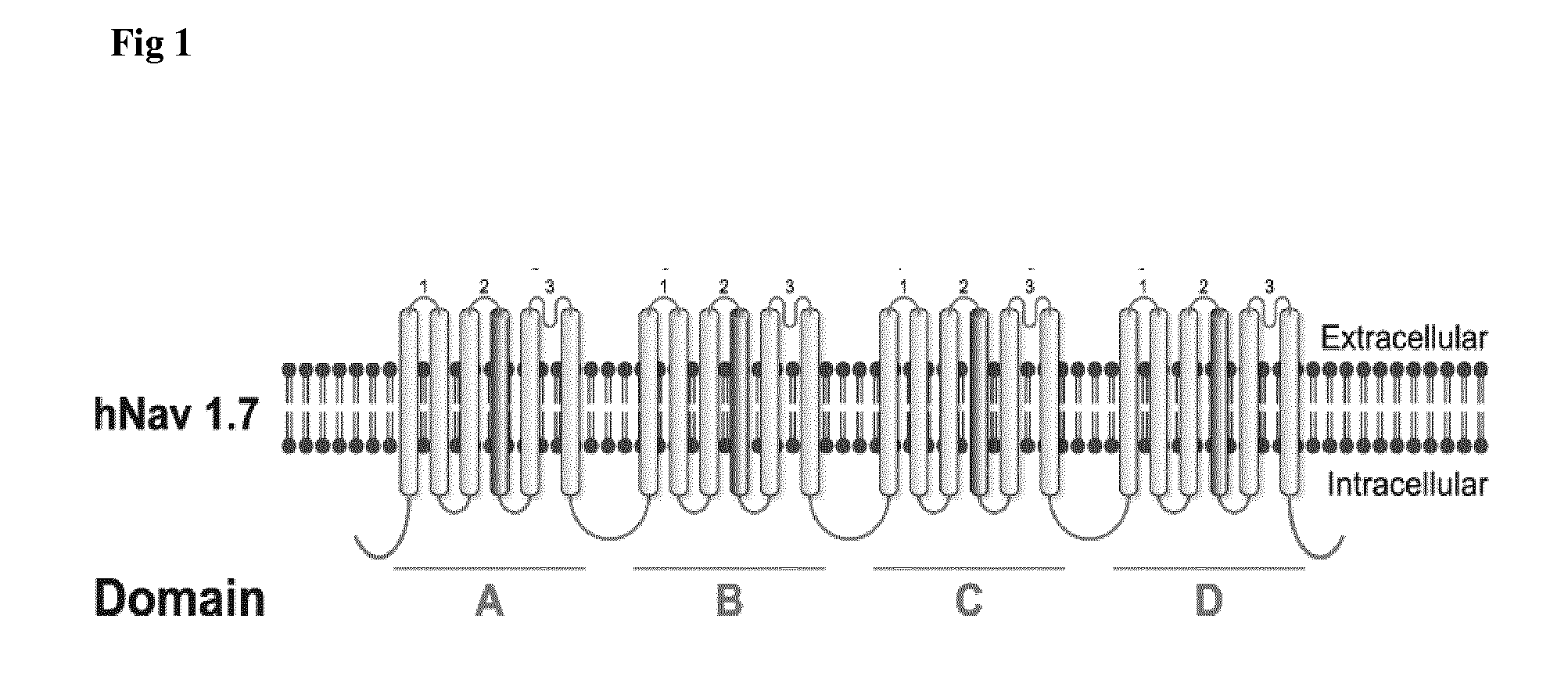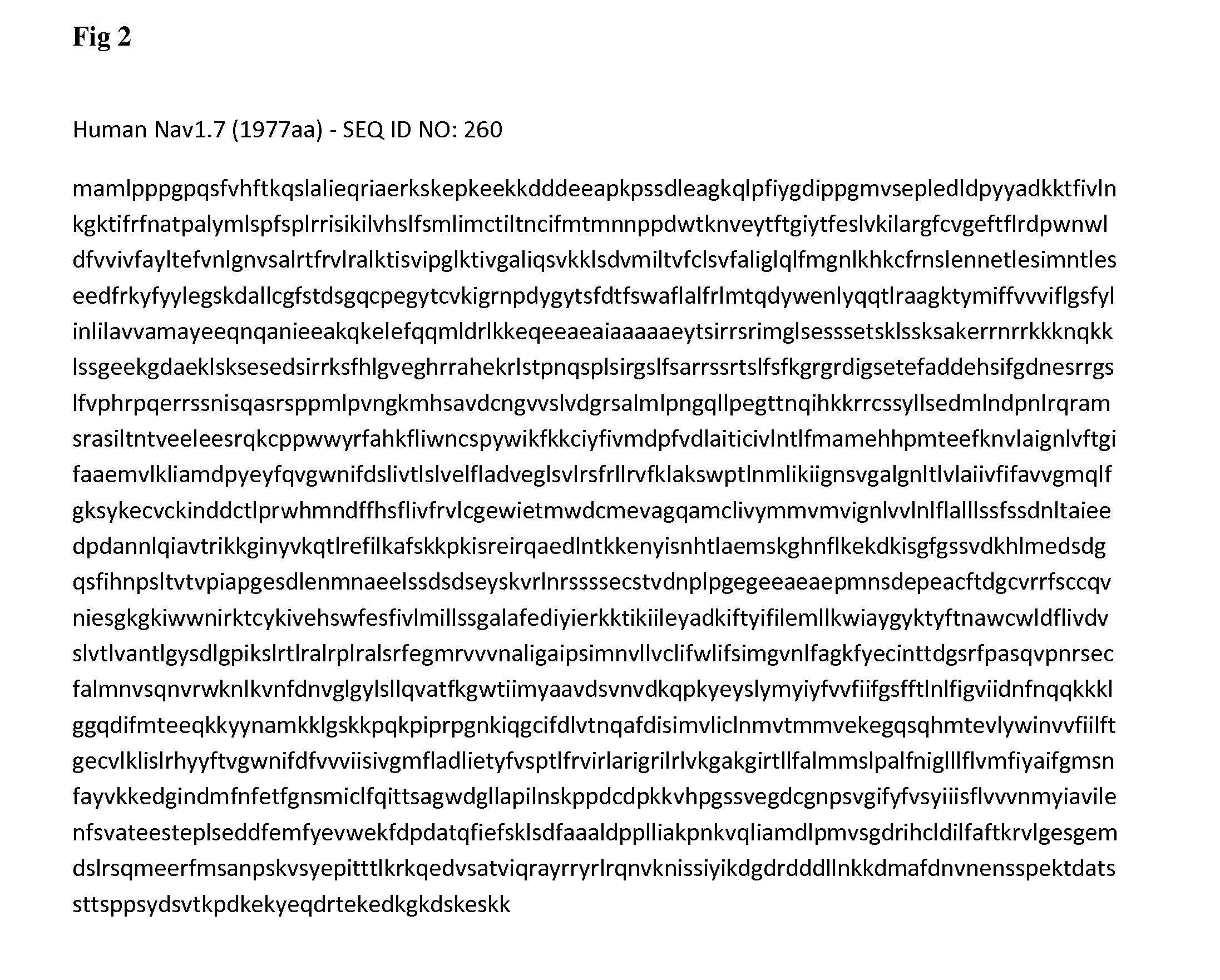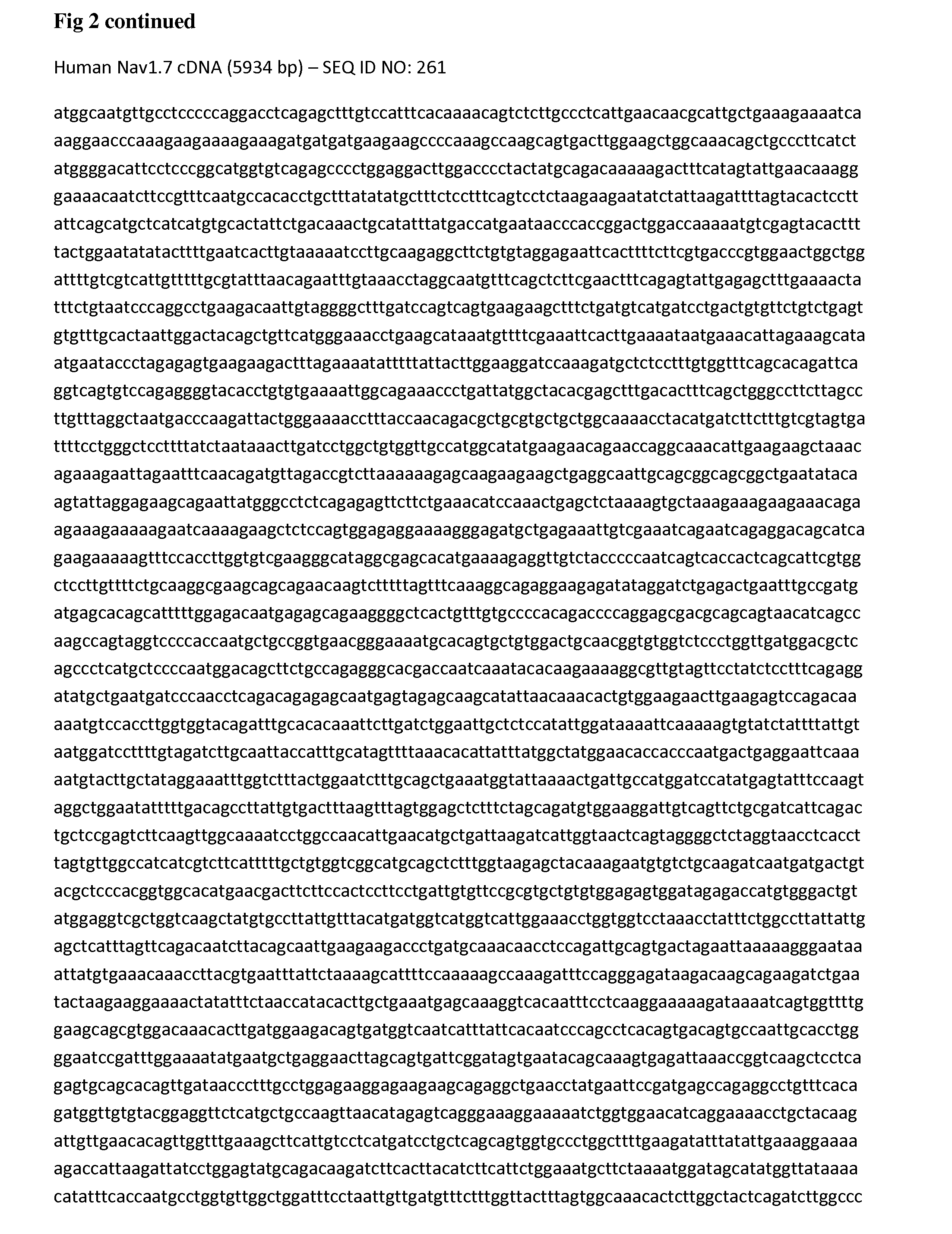Antibodies to complex targets
a technology of complex targets and antibodies, applied in the field of antibodies and antigen binding fragments thereof, can solve the problems of significant challenges in the production of antibodies, particularly antibodies with certain preferred features and/or properties, and achieve the effect of reducing production costs and high production yields
- Summary
- Abstract
- Description
- Claims
- Application Information
AI Technical Summary
Benefits of technology
Problems solved by technology
Method used
Image
Examples
example 1
Immunization of Llama
[0542]Immunizations of llamas and harvesting of peripheral blood lymphocytes (PBLs) as well as the subsequent extraction of RNA and amplification of antibody fragments were performed as described by De Haard and colleagues (De Haard H, et al., J. Bact. 187:4531-4541, 2005; Basilico C., et al., J. Clin. Invest. 124:3172-86, 2014). Two llamas were immunized six times in a weekly interval with hNav1.7-loopA3-llama Fc fusion (SEQ ID NO: 267, see Table 4) by intramuscular injections in the neck divided over two spots. For the first 2 immunizations 100 g antigen was used, whilst for the subsequent immunizations 50 g antigen was used. Antigen was mixed with Freund's Incomplete Adjuvant prior to immunization.
[0543]Four days after the last immunization, 400 ml blood was collected for extraction of total RNA from the PBLs using a Ficoll-Paque gradient to isolate PBLs and the method described by Chomczynski P, et al., Anal. Biochem. 162: 156-159, 1987 to prepare the RNA. O...
example 2
Library Construction, Selection and Screening
[0544]Independent VλCλ and VκCκ libraries were constructed using a single-step PCR, in which 25 cycles with tagged primers was done (De Haard H., et al., J. Biol. Chem. 274: 18218-30, 1999). The VHCH1 libraries were built using a two step PCR, in which 25 cycles with non tagged primers was done followed by 10 cycles using tagged version of these primers. The sizes of the individual libraries were between 108 and 109 cfu. Next the antibody fragments were re-cloned to form Fab-libraries. The final libraries were between 1×108 and 4×109 cfu. Quality control of the libraries was routinely performed using PCR.
[0545]Three rounds of selections were done on directly coated hNav1.7-loopA3, hNav1.7-LoopB1-C1-D1 or hNav1.7-LoopC3 (as represented by SEQ ID NOs. 267, 268 and 269, see Table 4) using standard protocols. Elutions were done with trypsin or triethylamine. An aliquot of the eluted phages was used to infect TG1 bacteria, which were subsequen...
example 3
Binding Affinity for Nav1.7 Extracellular Loops
[0548]mAbs originating from the loopA3-llama Fc immunization were assayed for their affinity for hNav1.7-loopA3. Therefore, a Maxisorp plate was coated with 10 ng / well of loopA3-llamaFc chimera and incubated overnight at 4° C. The next day, the plate was blocked with PBS+1% casein for 2 hours at RT. Subsequently a concentration gradient of antibodies was applied (range 0.25 pM-66 nM) for another hour. Antibody binding to loopA3 was detected using a HRP-conjugated anti-human Fc antibody (Abcam, Ab7499) (incubation 1 hour at RT, dilution 1 / 5000 in PBS+0.1% casein), followed by TMB addition and OD620 nm measurement. EC50 values were determined using GraphPad Prism software. Results are shown in FIG. 3 and Table 8. For comparison purposes a known hNav1.7-loopA3 binding monoclonal antibody, UCB_932 (US2011 / 0135662), was tested. All mAbs have a much improved affinity for hNav1.7-loopA3 compared to the reference mAb and EC50 values range betwe...
PUM
 Login to View More
Login to View More Abstract
Description
Claims
Application Information
 Login to View More
Login to View More - R&D
- Intellectual Property
- Life Sciences
- Materials
- Tech Scout
- Unparalleled Data Quality
- Higher Quality Content
- 60% Fewer Hallucinations
Browse by: Latest US Patents, China's latest patents, Technical Efficacy Thesaurus, Application Domain, Technology Topic, Popular Technical Reports.
© 2025 PatSnap. All rights reserved.Legal|Privacy policy|Modern Slavery Act Transparency Statement|Sitemap|About US| Contact US: help@patsnap.com



